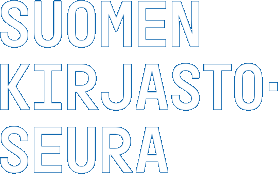WE ARE FACING interesting times. Are we about to have no ministries at all? How many municipalities will we have? Has the welfare state, including its public library institution, reached the end of its road? Should we get closer to the business world?
A CHILDREN’S HOSPITAL is being planned with private funding . In Stockholm, the municipal cultural institution Kulturhuset is merging with the city theatre Stockholms stadsteater, which operates as a private enterprise.
ENTREPRENEURSHIP is also creeping into employment relationships. Helsingin Sanomat, Finland’s leading newspaper, wrote in April that the University of Helsinki is turning humanities students into entrepreneurs. Not everyone likes this change, particularly if it means people are somehow forced to become self-employed. On the other hand, some representatives of the younger generation may be interested in library entrepreneurship in line with the Swedish Nacka model.
WITHIN FINLAND’S public library institution, we have no experience of privately or entrepreneurially organised library services. However, organisational libraries are a familiar concept. A new development in integrating entrepreneurship and the library is the Entrepreneurship Library: in the library development project of Seinäjoki University of Applied Sciences, entrepreneurship research is monitored and business know-how disseminated. This online service project also focuses on developing competence and action models for library online services at a more general level.
CHANGES IN SOCIETY cause changes in the library institution and in library work. If municipalities are radically merged, the number of libraries will also shrink. Larger acquisitions units will emerge and resource acquisition may be centralised. Will acquisition be outsourced? Will the services be bought? What will be the role of BTJ, the company that provides centralised services to libraries, in the selection and acquisition of library resources? The City of Hämeenlinna, cooperating with BTJ, has experimented with the outsourcing of resource acquisition. This pilot project is now over, and BTJ is moving from testing to product development. Under consideration is primarily the development of genre- and resource-specific solutions.
THIS YEAR a collection-policy working group composed of representatives from the library sectors was established. The group is taking the idea of a national collection policy as its starting point. The various sectors’ needs are now being mapped regarding collection management and access to centralised services.
HOW ABOUT the role of the National Library of Finland in providing centralised services and disseminating e-resources? Electronic content is here to stay, but the potential of libraries to act as disseminators is still being explored. The Norwegian model, in which all national literature is brought online, free for anyone to read, is probably too expensive for Finland.
WHAT will be left of library professionals’ work in the future? What do they have to master? In the latest issue of Kirjastolehti, Jarmo Saarti, Director of the University of Eastern Finland Library, and Hannu Sulin, Counsellor for Library Affairs at the Ministry of Education and Culture, see these as key challenges: “Education in library and information services has not been systematically and holistically evaluated, and we don’t have sufficient information on how this education meets the needs of libraries, either.”
IN JUNE 2013, we will again attend the nationwide Library Meeting, organised by the Finnish Library Association. During the meeting, we will reflect on the theme of E-services, generations and coping strategies.
A new president and board will be elected for the association to contribute to the development of the future of libraries. “In ten years,” says the association’s Vice-President and board candidate Pirkko Lindberg, “libraries will be multifaceted centres for culture and wellbeing in all cities and villages.” That is a fine goal worth a joint effort.
